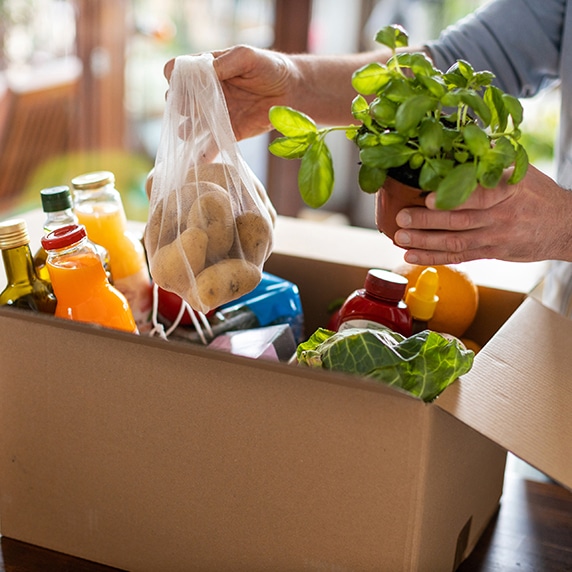What is the True Cost of Convenience?
The ease and convenience of home grocery delivery and meal delivery services can be a lifesaver as people continue to manage through COVID -especially for the homebound or those with high-risk health conditions. Food delivery is also essential for households without transportation, and helpful to anyone who decides that home grocery and meal delivery are services that meet their needs.
While home grocery and meal delivery are fast and convenient, it can be helpful to weigh the pros and cons of the added expenses involved if it is a choice and not a necessity. Outlined here are the key cost considerations of home grocery deliveries, restaurant deliveries, and home-delivered meal subscription boxes.

Home Deliveries of Groceries
A significant number of households turned to home delivery of groceries in the last two years. As noted, while grocery delivery services are critical for many, they can have an added impact on budgets.
Delivery and ordering fees vary from store-to-store and include factors like discounts for first-time orders, minimum dollar amounts per order, and promotions.
For example, Kroger Delivery lets people shop for groceries online for direct delivery to their homes for a fee ranging from $9.95 to $11.95 per order. These costs can vary and even go higher depending on the store.
Apps that provide delivery from multiple different grocery stores also offer convenience that comes at a price. Instacart charges $3.99 for same-day orders of $35 or more. Researchers suggest to look closely at what it would cost to pick up items on your own versus home delivery.
Key Takeaway
Think “price per item” when considering home delivery of groceries through an app or the store. Be sure to fully understand the price per item may be higher than in-store, and the total delivery fees and service charges can add up. Tips for the workers who are completing and delivering your order are an encouraged added expense.
Home Deliveries from Restaurants
Whether using restaurant delivery apps, ordering online from a restaurant chain, or calling to order directly from a local restaurant, meal delivery is convenient and helpful for busy households.
Again, it is best to understand the total out-of-pocket costs.
Online restaurant delivery apps like DoorDash come with a cost. Beyond paying for the restaurant meal, expect to pay an annual fee or a per-order delivery fee to the service as well as service fees with every order. Tips should also be factored in. The same fees hold true for Grubhub and similar apps. As gas prices spike, food delivery apps are passing those cost increases to consumers, and you may see a fuel surcharge as well.
When ordering home delivery from a restaurant chain, note that there have been several class-action lawsuits filed against restaurant chains that advertise free or low-cost delivery. The lawsuit notes that these chains impose an additional “service fee” on delivery orders, charging more for the same menu item when customers want it delivered.
Key Takeaway
Whether using an online app or ordering directly from a restaurant, compare menu prices with what is being charged for delivery. If the total doesn’t seem right or includes any surprise fees, closely review the order before completing the purchase.
Meal Subscription Boxes
An attractive option to get fast, healthy meals to the table is to use food subscription boxes like Blue Apron, HelloFresh, and Plated. These services are popular with those learning to cook, busy families, or seniors looking for meal preparation ease and convenience. After paying an annual subscription, the boxes arrive at a household with a meal recipe and the complete ingredients to make at-home meals.
Again, it’s smart to look at the true costs involved.
Even with introductory offers or other incentives, meal subscription box kits can be pricey. Generally, meal subscription boxes cost about $10-$15 per person, per meal. That per meal price might go up once an introduction or promotional pricing expires. Depending on the amount of food received each month and the subscription service provider, households could be paying a few dollars to a few hundred dollars every month for the service.
Key Takeaway
Meal subscription boxes can be beneficial for busy people trying to minimize the takeout they eat, but that comes at a price. Take the time to calculate the price per meal which is often higher than dining out.
Final Thoughts
Home delivery services might make sense for households looking for convenience or who may have limited ability to leave the house. Home delivery may not make sense for your wallet due to the added costs that will be incurred. GreenPath suggests carefully balancing the cost of convenience against other household expenses, if you are in a position to choose. By understanding the true costs of these options, households can make the best decisions that work for them.



